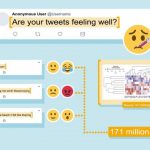 Behavioral economics has seldom been more popular, with so called ‘nudge units’ emerging across the western world to promote the ‘right’ kind of behaviors.
Behavioral economics has seldom been more popular, with so called ‘nudge units’ emerging across the western world to promote the ‘right’ kind of behaviors.
A recent paper by Carnegie Mellon highlights the potential of behavioral economics to drive health policy. The paper argues that the policies targeting individual behaviors need to be mixed with more systemic interventions.
The authors believe electronic patient records offer a particularly strong platform for nudging clinician and patient into the right direction. For instance, nudges might be deployed to ensure clinicians use both effective and cheap treatments.
“There can be no real progress on healthcare without tackling the problem of costs,” the authors say. “But what is often lost is that cost reduction does not mean depriving people of the care they need. In fact, many commonly performed and costly surgeries can make patients worse off.”
The paper also suggests nudges could be used to prod people into making healthier lifestyle choices. It’s not always the case that big changes require big, expensive programs to deliver results. Instead, smaller, evidence-based interventions can be more effective.
With healthcare consuming ever larger proportions of national income, it is high time that other approaches are taken, especially as behavioral insights are often cost-neutral.
“A key feature of behavioral insights is that they are often cost-neutral or cost-saving to implement. Leveraging behavioral insights as we continuously modify and create health policy can help bring the efficiency and cost savings that our healthcare system will always need,” the authors say.
Social change
Data-driven approaches to change are something I’ve touched on numerous times on this blog in the past, and they continue to offer some fascinating early insights into changes in health. A recent study by the Department of Energy’s Pacific Northwest National Laboratory highlights the potential for social media data to give public health staff early warnings of rises in a range of conditions, from influenza to depression.
The researchers examined how we behave differently on social media when we have a range of conditions. The analysis revealed tell-tale signs in terms of both the opinions we express, and the emotion we show.
“Opinions and emotions are present in every tweet, regardless of whether the user is talking about their health,” the authors say. “Like a digital heartbeat, we’re finding how changes in this behavior relate to health trends in a community.”
We’ve seen social media data mined by political campaigners extensively in recent years, but the researchers believe this data also has invaluable health insights too.
The team studied over 170 million tweets to understand how our tweets change when we’re unwell with influenza-like illnesses. The analysis revealed valuable variations, even though the baseline remains fuzzy and heavily influenced by the world around them.
Even whilst taking this into account, the researchers believe our tweets are generally more neutral and sad than when we’re well, with emotions such as happiness and anger more prevalent when we’re fit and healthy.
The team want to take this further and see whether the model they’ve developed can be used to predict changes in health before they occur, and therefore allow public health workers to respond effectively and efficiently.
There’s little doubt that healthcare systems around the world need to do things differently, but the good news is that those different approaches are out there waiting to be deployed.